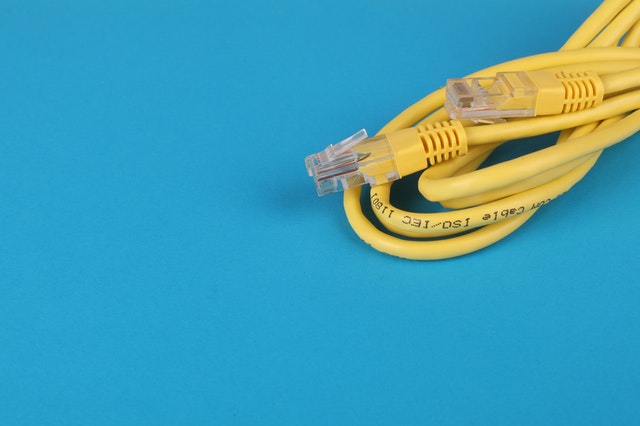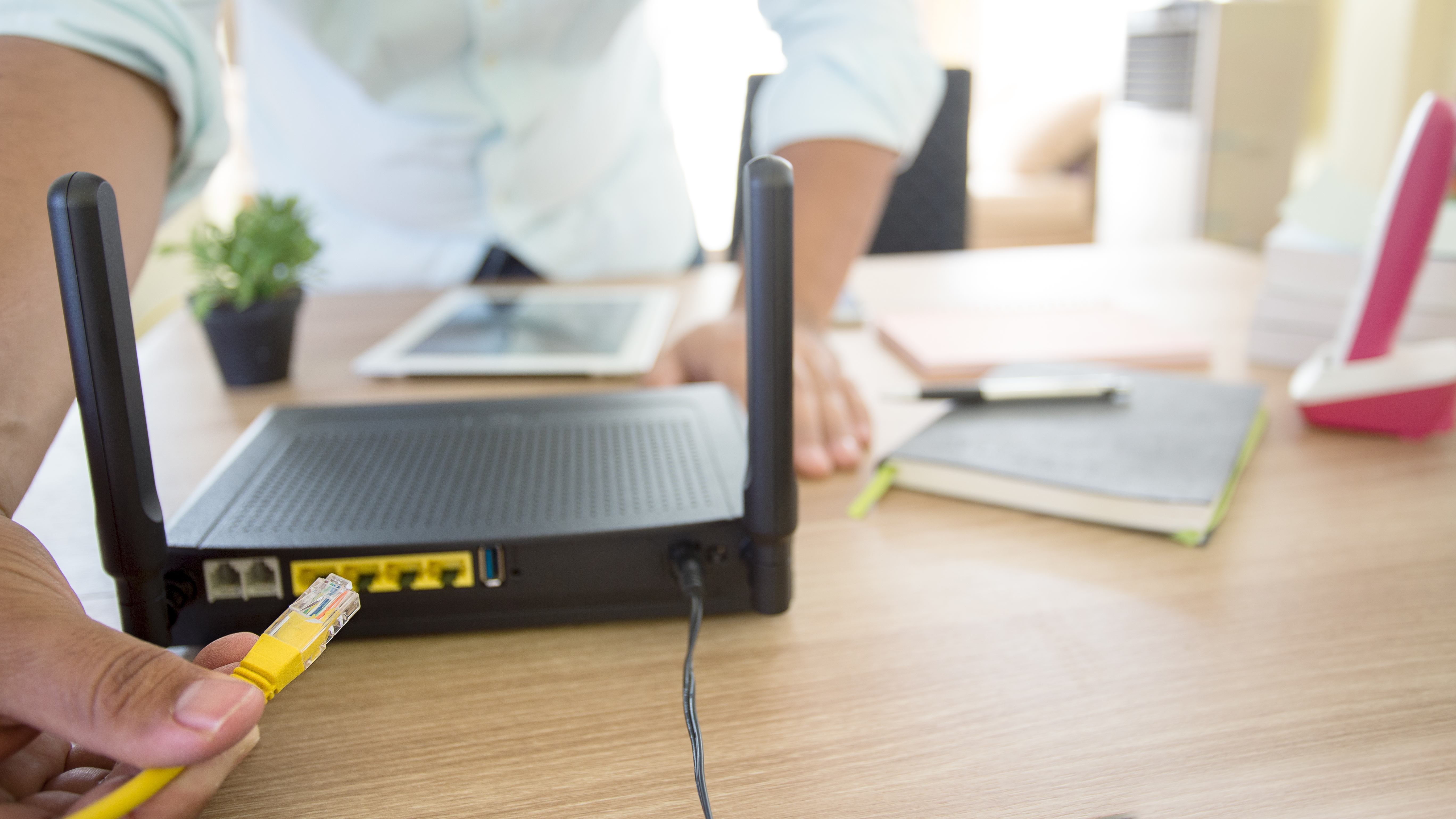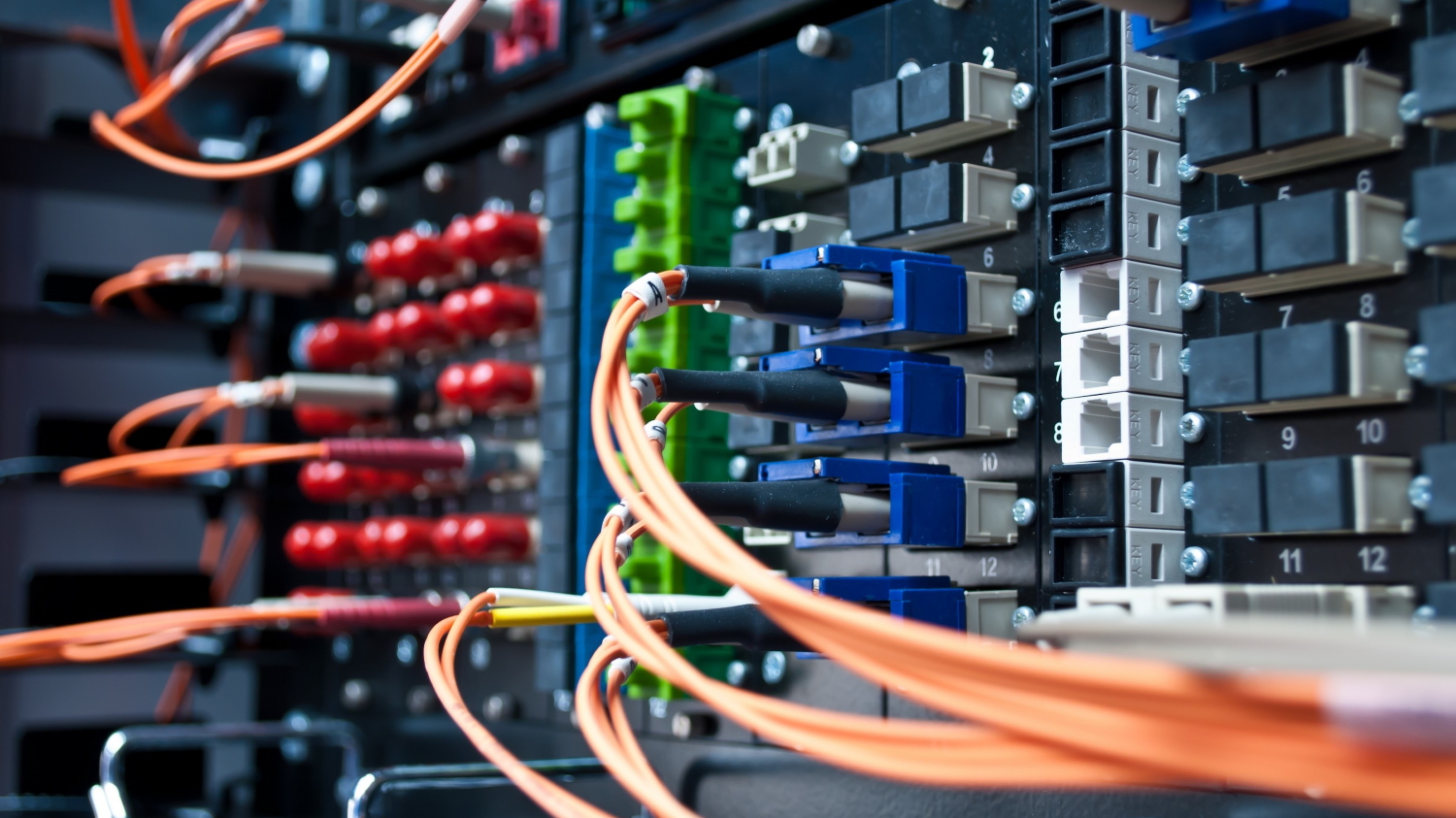What is ADSL broadband?
This broadband option might not be as popular as it once was, but there's still top deals to be found. Learn about it here.

ADSL broadband used to be the most popular form of broadband available. However, in June 2024, it's seen to be outdated and is now being removed from the market by many providers, who are pushing customers towards fibre and full fibre deals instead. As a result, if you're looking for the cheapest and best broadband deals on the market today, it's unlikely you'll see many ADSL deals in your search results.
However, although faster connections like fibre and cable broadband are now more popular than ADSL deals, there's still a place for ADSL packages on the market. After all, in some locations, they remain the only option available.
Looking for an affordable tariff or keen to learn more about how the technology behind ADSL broadband works? In this guide we've outlined everything you need to know, including all the jargon, the providers that still offer ADSL connections and what this type of internet does and doesn't allow you to do online.
What is ADSL broadband?
ADSL - which stands for Asymmetric Digital Subscriber Line - is a type of broadband that's provided to a property via a standard copper telephone line. As we've mentioned above, it's the slowest and most basic connection option available on the broadband market today. It offers average download speeds of 10-12Mbps. To put this into perspective, basic fibre options offer speeds of 30Mbps+, while full fibre options offer average download speeds of 100Mbps+.
As we also mentioned above, it's also now considered to be outdated and many providers have started to remove ADSL options from the market. For this reason, if you're searching for broadband deals in your area, you may not notice any ADSL packages.
How does ADSL broadband work?
The old copper phone lines used with ADSL connections are in fact part of BT's Openreach network - something that's used by many broadband providers. These connections run from the nearest telephone exchange into a property.
Through something called 'local loop unbundling', different broadband providers (other than BT) can use the line to offer their services. The 'local loop' specifically refers to the part of the line that goes from the exchange into a building.
As these lines are also used for connecting landlines, a device called a 'microfilter' is then utilised. This separates the broadband and phone line, so both can be used at the same time.
However, the download speeds you can get from the old copper cables are limited and they can only send so much data at once - hence why they're so slow. On average the download speeds are around 8Mbps, but this can be slightly higher or lower depending on how far the cable has to travel from the exchange and the condition it's in.
A close and decent quality ADSL line can reach average download speeds of about 10Mbps and upload speeds of 1Mbps. In some instances, a property may also be serviced by the slightly upgraded 'ADSL2+' lines, which give top speeds of 24Mbps.
This is exactly why many providers have started to remove ADSL deals from the market. These speeds simply aren't quick enough for homes that have multiple connected devices, households where people work from home and need to go on video calls, or homes where multiple family members need to be online simultaneously. For context, even the most basic fibre broadband packages are around 3x quicker.

Who offers ADSL broadband?
It used to be the case that ADSL was the main broadband product available to UK customers and that it was widely available on the Openreach network. It also used to be considered quick, as it was much faster than dial-up internet.
Today though, only households that cannot access fibre connections are eligible to receive ADSL connections. This is because most providers won't supply an ADSL connection to a house where they can deliver at least one fibre package. As the fibre network now covers more than 98% of the country, this means very few households can access ADSL deals. The majority of these properties are located in rural or remote areas.
That said, if you live in a non-fibre area, then you may still be able to find ADSL broadband packages - which are often quite cheap, but slow - from the likes of:
- Sky - its ‘Essential Plus’ package
- BT - its ‘Broadband’ package
- NOW Broadband - its ‘Brilliant’ package
- Plusnet - its ‘Unlimited’ package
- EE - its ‘Standard’ package
- TalkTalk - its ‘Fast’ package
Remember though, ADSL broadband is in the process of being retired entirely. Openreach has been steadily upgrading the network from old copper cabling to a faster one with fibre cables, and the company is on course to roll this out to 25 million homes and businesses by December 2026.
As such, we will likely see fewer providers offering ADSL and ultimately less choice when it comes to packages in the next few years.
At present, although all the above providers do still technically offer ADSL deals, all of them only offer these packages in places that cannot get a fibre connection. As a result, if you're searching for deals and live in an area where it's possible to get either a fibre or a Full Fibre connection, the above deals may not display in the results you're shown.
What can and can't you do online with ADSL broadband?
With the slower download and upload speeds provided by an ADSL connection, you won't be surprised to hear that there are some limitations to what you'll be able to do online.
Here are a few examples of the kinds of things you will be able to do:
- Casually browse websites
- Stream music
- Download files, apps and documents
- Use streaming services (potentially with some interruption during peak times)
However, you won't be able to do the following:
- Stream in 4K or UHD
- Use video chat without interruptions or loss of quality
- Use multiple devices online at the same time
- Quickly download large files
- Include larger TV bundles (in most cases)

What to think about before you choose ADSL broadband
As the above lists suggest, even the online tasks you can do with ADSL broadband can be affected if there's more than one active internet user in a household. This can be especially challenging for those working from home.
However, the flip side to this is that you can pick up an affordable tariff if you opt for an ADSL connection. What's more, some providers tend to offer extra incentives if you're a customer who can't access fibre broadband yet.
So with that, before you choose ADSL broadband, it's important to consider the following factors:
- The broadband usage and requirements of your household.
- How much you can realistically afford to pay each month.
- If there are any download limits (as some packages can have these).
- What extras a provider is including.
- How long the contract is and if it works out good value in the long run.
- Whether or not fibre is likely to come to your area any time soon.
What other types of broadband can I get in the UK?
As we've mentioned earlier, ADSL used to be the main choice for broadband here in the UK. However, this is no longer the case. To give you an idea of how much things have changed in the last 10 years or so, here's a rundown of the other types of broadband we can now receive in the UK:
- Fibre - uses 'fibre-optic' cables to connect your property to your nearby telephone cabinet, instead of the copper lines. Due to this, fibre broadband packages can transmit much more data and give average download speeds of between 30 and 80Mbps.
- Full Fibre - this type of fibre broadband sees the fibre-optic cables run all the way from the provider's exchange and into your property - this is also known as 'fibre-to-the-premises or FTTP. As such, huge average download speeds of 1,000Mbps can be accessed with Full Fibre broadband.
- Cable - rather than using the Openreach network, there are some providers (with Virgin Media's broadband deals being the main example) who have their own independent cable networks that bring broadband into homes and businesses. While cable broadband isn't as widely available as some other types, the technology in these cables can give average download speeds over 1,000Mbps.
- Mobile - you can do away with cables altogether with mobile broadband. This is because this broadband type uses phone networks and all you need to do is plug in a router or dongle and connect your devices to the WiFi it will then provide. This can be available as 4G broadband and 5G broadband, with the latter being the faster of the two. However, whether or not you can get mobile broadband depends on the coverage in your area.
- Satellite - this is another broadband type that's cable-free. As you can guess, your broadband is instead beamed into your property via satellites. It's becoming more and more popular as the technology is starting to advance and offer faster speeds. It was historically only really for remote properties who couldn't get ADSL. You can learn more about this in our 'what is satellite broadband?' guide.

ADSL broadband: FAQs
To help get you even more up to speed, here are some extra frequently asked questions consumers have about ADSL broadband:
When was ADSL first made available in the UK?
ADSL was first actually launched way back in 2000 and was marketed as a 'permanently connected' internet line to replace 'dial-up'. The first ADSL speeds were around 512kbps, which was a notable increase from the 56kbps that was available through dial-up.
The technology quickly grew in popularity as it of course meant consumers could use the internet and their phone line at the same time - rather than the single connection modems that were typically used by households for their internet access. ADSL also meant that customers didn't have to pay a charge for the specific amount of time they were online.
ADSL download and upload speeds began to slowly increase following the technology's introduction and, by 2005, there were more ADSL connections supplying households than there were dial-up ones. By this time, the download speeds had increased to a maximum of around 2Mbps.
How do I know if I have ADSL broadband already?
The easiest way to check which connection you currently have is to run a broadband speed test.
If you do this and the test shows that you're receiving average download speeds of around 10Mbps, then it's likely that you're running an ADSL connection.
If you're still unsure, then check your contract with your current provider. This will detail the type of connection you have and the average download speeds you can expect to receive.
What tech do you need with ADSL broadband?
As ADSL broadband uses the Openreach network and existing phone lines, you won't need much in the way of installation. Instead you'll need a microfilter plugging into your phone line socket to split your landline and your broadband so they can be used at the same time, as well as a router and ethernet cable to then connect these all up.
You'll only need an engineer sending out for installation work if your property isn't yet connected to the Openreach network. Also, some providers may also require a separate modem to connect to your router.
Can I get a replacement microfilter from my broadband supplier?
Usually, if you need to get replacement tech, your broadband supplier should be able to provide this for you. However, you should be aware that this may also be at cost, especially if your chosen provider no longer officially offers an ADSL package.
This is a commonly asked question, as microfilters can get easily damaged and suffer from wear and tear.
Can I get ADSL broadband instead of fibre, even if fibre is available in my area?
As of June 2024, almost all providers will now only offer fibre broadband packages to customers when fibre connections are available.
As a result, the only way to truly guarantee access to ADSL broadband is if your property is connected to the Openreach network but has not yet been upgraded to 'fibre-capable' status.
Can I get ADSL broadband without a phone line?
No, if you choose an ADSL broadband package, then you'll also need to have a phone line. This is because your internet connection uses the same cables and network.
That said, although you need to have a phone line you do not need to have an actual landline that receives calls. You can learn more about this in our 'do you need a landline for broadband?' guide.
Does ADSL have another name?
Yes, many people call ADSL 'standard broadband'. This is because it's the most basic form of broadband connection available today.
How can I speed up my ADSL broadband?
While there's not much you can do to get your speeds above 10Mbps (this is also determined by how far away your property is from the telephone exchange and the quality of the telephone cables), you can make a couple of changes to how you use the internet to give its performance a little boost.
- avoid having multiple devices trying to use the internet at the same time.
- lower the quality of your streaming to something below HD.
- directly plug your laptop into the router using an ethernet cable.
- avoid having too many tabs open at once.
Is ADSL the cheapest broadband option?
In most cases, this is now no longer the case. To incentivise switching, a number of providers have now priced their basic fibre package at the same price as their ADSL option. In some instances, ADSL deals are actually more expensive than fibre packages, particularly when the provider is running a sale or promotion.
At best, an ADSL plan will be a couple of pounds per month cheaper than a fibre package. For such a negligible difference, it's usually best to simply upgrade to a fibre package and enjoy all of the additional benefits.
Can I cancel my ADSL broadband?
Much like any other broadband package, you have the right to cancel your ADSL one if you wish. But, if you’re still under contract, you may have to pay an exit fee if you do want to terminate your deal.
That said, if you're still under contract with your provider but they now offer a fibre package that wasn't previously available, it's worth talking to them about switching to a fibre deal. As many providers are now phasing out ADSL options, they may allow you to switch without a charge if you sign a new contract for a fibre deal.
How do I switch from ADSL to a new broadband package?
The best thing to do here is to contact your existing provider and learn more about what broadband options might be available to you now. With fibre’s widespread rollout, it’s more than likely you’ll be able to switch to such a package - it might even be the case that you’ve been moved over automatically.
It can also be useful to check out the latest broadband deals to get a measure of the cost and average download speeds you could soon get in your property. However, you may need to prepare yourself for the fact that you can currently only access ADSL broadband.
More advice for finding the right broadband option
If you decide that you do indeed want ADSL broadband, then you should head to our best broadband deals page to see what offers can be found right now. You can also use our widget below to see what's available in your area.
Equally, our guide and widget can show you more about the other broadband options we've mentioned above, including fibre, 'Full Fibre', 5G broadband, cable and more. This is something we go into finer detail about in our guide to the different broadband types that we can get in the UK, if you want to get some additional insights into these.
Finally, if you're still unsure about whether or not ADSL is right for you, then we also have our handy 'how do I find the best broadband provider for me?' guide that should be able to point you in the right direction.
Get daily insight, inspiration and deals in your inbox
Sign up for breaking news, reviews, opinion, top tech deals, and more.
Rich is a freelance copywriter and content strategist with over 10 years' experience. His career has seen him work in-house and in various agencies, producing online and offline content marketing campaigns and copywriting for clients in the energy industry.
